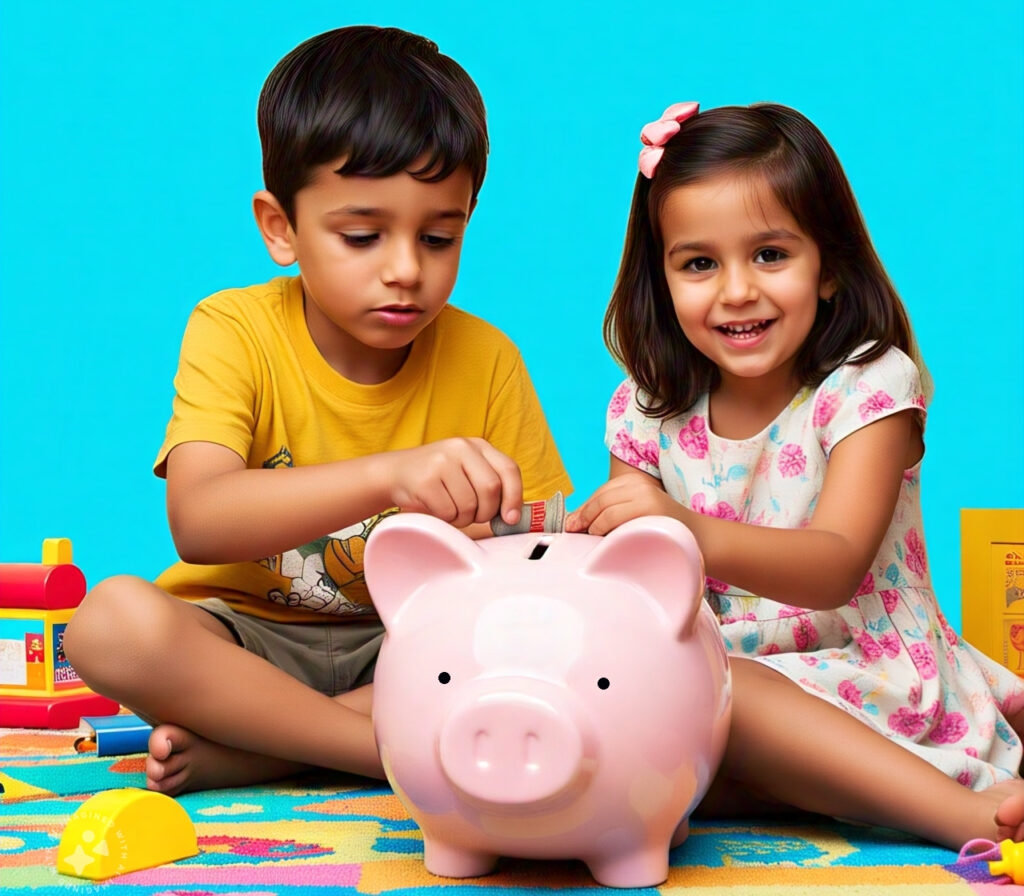Money management is an important life-long skill to learn. As parents, it’s your job to teach them the skills that will benefit them as they become adults and learn to manage their own households. Although it may seem like a complicated task – I still have trouble understanding concepts like dividends, compound interest, and capital gains – there are basic skills that you can teach that will lay the foundation for all future financial decisions.
Start Early
The best thing you can do is to start teaching your children early. As soon as they are able to understand the concept of money – as young as toddlerhood – they are able to start learning basic concepts. Of course, lessons should be age appropriate. Simple role-playing games like shopping in a grocery store can be useful enough for very young children. As they grow older, you can build on this knowledge to explain more intricate concepts.
Savings
Teaching your kids about savings is as easy as giving them a piggy bank. When they receive money – either from an allowance or as part of a birthday gift – talk to them about the importance of saving part of that money in their bank. You can talk about short-term savings goals – such as buying a new toy – and long-term savings goals – such as buying a new bike. As your children get older, you can introduce them to a savings account at a bank and talk to them about concepts such as simple and compound interest.
Budgeting
The concept of savings segues nicely into discusses about budgeting. Show your children how they plan for larger goals by budgeting their money instead of spending everything they have at once. You can also illustrate how budgeting works in practice by highlighting your strategy when shopping at the grocery store or – for older children – showing them a sample budget for household expenditures.
Allowance
Giving an allowance is a great way to teach your kids about money. It teaches them to be responsible about money, and it highlights the concepts of saving and budgeting. You should make savings a condition of the allowance and make it clear to your children what they will be responsible for with their allowance. For example, if they want a new video game, you may tell them that is an item that they must always finance with their allowance.
Credit
Credit is an advanced concept that may be best suited to explore with older children. Pre-paid debit cards are a great way to teach your children about credit in a low-risk way. Older teens may be ready for a real credit card. Look for cards with a low balance and no annual fee, and make sure you set up guidelines for how the card is to be used and when the bill is to be paid.
Making Money
Besides their allowance, there are many ways that children can make money. A lemonade stand is a classic for many young children. Older children and teens may be able to make money by babysitting, mowing lawns, washing cars, walking dogs, or getting a paper route. Encourage children to pursue ways to make money. It will give them real-world experience with managing money and responsibility outside the family.
There are many other financial concepts that you can explore with your children, including investing, taxes, and charitable giving, among others. When you are teaching kids about money, remember that you are the best role model. Lead by example, and try to make it fun. There are many games that can illustrate these basic financial concepts. Finally, let them make mistakes. Children will learn from the consequences of their mistakes. It’s better to face those consequences in the safety of the family home than to have to deal with creditors and other repercussions as adults.
Image Created by Meta AI
See Also:
- Teaching Your Kids Money Management Skills
- How To Develop Winning Money Management Skills
- Top 10- Nicest Affordable Cars
- Annuities for Retirement
- Gaining Financial Freedom
Recommended By Amazon:
- Raising Financially Confident Kids
- Moneywise Kids
- Money Savvy Pig – Blue
- Rich Dad Cashflow for Kids


